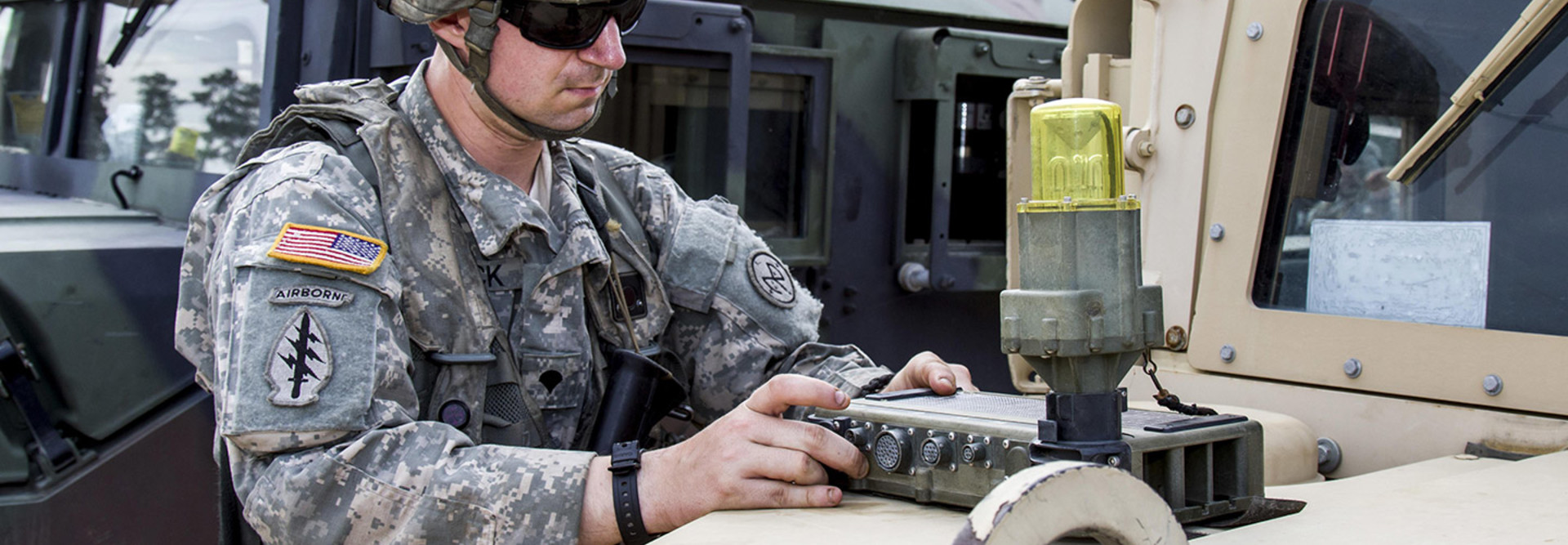Military IoT: DARPA’s ‘N-ZERO’ Initiative Aims to Conserve Power for IoT Sensors
The Defense Advanced Research Projects Agency (DARPA) has a clear vision for how the military will use Internet of Things sensors in the future: it’s zero. Well, N-ZERO to be exact, and it’s starting to make headway.
Started in 2015, the initiative, Near Zero Power RF and Sensor Operations (N-ZERO), aims to tackle a conundrum of IoT. The Defense Department’s research arm notes that high-tech military sensors use active electronics to detect vibration, light, sound or other signals on the battlefield. Persistent sensing is used to protect troops at forward operating bases.
This is important because troops need to know about enemy movements and changes to the battlefield. However, such sensors constantly consume power, often spending time processing what turns out to be useless data. That power consumption then saps the sensors’ battery life and also slows the development of new sensors, DARPA says. It’s also costly in two ways: the armed services need to constantly put new sensors into war theaters, and sensors that die can expose soldiers to danger.
As DARPA notes, N-ZERO “seeks to overcome the power limitations of persistent sensing by developing wireless, event-driven sensing capabilities that would allow physical, electromagnetic and other sensors to remain dormant — effectively asleep yet aware — until an event of interest awakens them.”
That program is starting to make progress, according to DARPA.
SIGN UP: Get more news from the FedTech newsletter in your inbox every two weeks!
DARPA Makes Progress on Lower-Powered IoT Sensors
Through N-ZERO, DARPA is trying to dramatically improve the efficiency of low power sensors at rest.
The program “intends to develop underlying technologies to continuously and passively monitor the environment and activate an electronic circuit only upon detection of a specific signature, such as the presence of a particular vehicle type or radio communications protocol.”
N-ZERO wants to use the specific energy in signal signatures “to detect and recognize attention-worthy events while rejecting noise and interference.”
According to SIGNAL, the official blog of the Armed Forces Communications & Electronics Association, N-ZERO “seeks to extend unattended sensor lifetime from weeks to years, cut maintenance costs and reduce the need for redeployments.”
N-ZERO is also aiming to potentially cut the battery size for a typical ground-based sensor by a factor of 20 or more but maintain its operational lifetime.
“What we can do today really doesn’t fulfill the vision of the Internet of Things,” Troy Olsson, DARPA’s N-ZERO program manager, told SIGNAL. “We can either connect devices that have power already, like your refrigerator, or devices that you can recharge every day or every couple of days, like a cellular phone. You can connect and interconnect those, and some people call that the Internet of Things.”
For Olsson, true IoT will involve sensors everywhere that are untethered from either a power supply or from having to be recharged constantly.
“We would like, for a long time, to stick out a sensor network to detect incursions or dangerous chemicals or other things that might be present around our forward operating bases,” Olsson says. “We can go out and change batteries every week or so, but that puts our soldiers in danger, and it requires a lot of manpower to support the maintenance of the sensor field.”
The N-ZERO program has three phases. The first, which ended December 2016, took 15 months to complete, SIGNAL notes. The second and third phases will each take one year. Some research teams achieved goals in the program’s first phase that they were expected to reach much later, the blog notes. For example, DARPA has been able to create zero-power receivers that can detect very weak signals — less than 70 decibel-milliwatt radio-frequency (RF) transmissions, a measure that is better than originally expected.
The system has also been able to detect objects correctly without raising a false alarm, which can crimp battery life. In the program’s current phase, the sensors need to distinguish between cars, trucks and generators in an urban environment at a close range, SIGNAL reports, and in the final phase, they will be required to classify those same targets from 10 meters (33 feet).
“The ability to sense and classify cars, trucks and generators in ... both rural and urban backgrounds from a distance of a little over 5 meters away and being able to do that with almost 10 nanowatts of power consumption is a big accomplishment in phase one of the program,” Olsson says.
Other Low-Power Wide Area Networks Abound
As the blog IoT for All notes, the N-ZERO program is similar to how many existing low-power wide area network technologies extend battery life, including those based on the Sigfox and LoRa’s LoRaWAN technologies. Those LPWANs send updates to network gateways only a few times per day, “minimizing the power needed to take in data and transmit accordingly,” the blog notes.
There are also cellular IoT protocols such as LTE Category M1 and Narrowband IoT, which use an extended discontinuous repetition cycle and power-saving mode to conserve power. Earlier this year, both Verizon and AT&T announced nationwide launches of LTE-M networks.
The difference between LPWAN devices and N-ZERO is in the persistent sensing the military needs for its sensors. Commercial low power sensors can be scheduled to send data at specific intervals to conserve battery life. DARPA wants to go further with sensors that are asleep-yet-aware and can be woken at a moment’s notice, and also with RF receivers that constantly listen for signals but consume little power when a transmission isn’t happening, the blog notes.
Where will all of this lead? Probably not to a product that soldiers can use in the field right away. “I suspect what we’ll have are significant field demonstrations, but someone else will need to come in and productize what we’re doing and operationalize it either for the Department of Defense or the commercial IoT,” Olsson says. “And I fully expect applications in both.”









